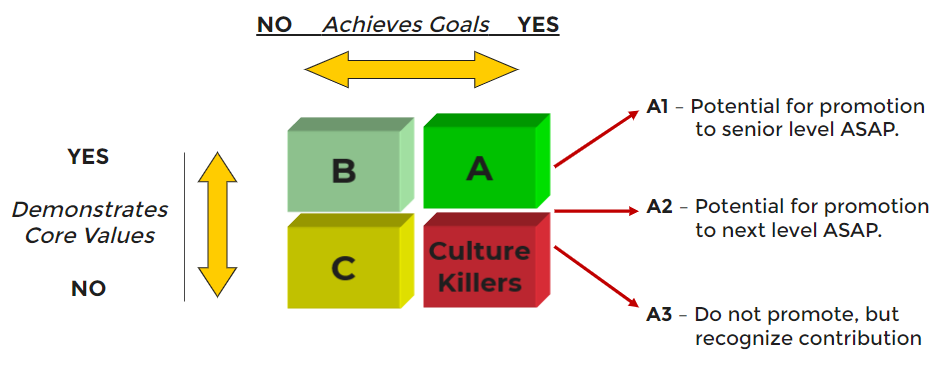Imagine this: Your top manager just announced their retirement, and suddenly, you’re scrambling to find a successor. Now multiply that scenario by every key leadership role in your organization. That’s the risk you face when your leadership pipeline isn’t built – or worse, when it’s leaking talent at every level.

What Is a Leadership Pipeline?
The leadership pipeline meaning goes beyond just a list for leadership succession. It’s a structured process that ensures you have capable, well-prepared potential leaders who have the required leadership skills and are ready to step up when needed. Think of it as a continuous talent development system – one that focuses not just on filling vacancies, but on actively building leadership capacity from within.
Why Is a Leadership Pipeline Important?
Simply put, a strong pipeline helps you avoid talent gaps and keeps your organization resilient in the face of change. It ensures that when a leader moves on – whether through retirement, promotion, or a sudden exit – you have someone already groomed and ready to take their place. Not only does this protect business continuity, but it also boosts morale, showing your team that growth from within is a real possibility.
Imagine if you could say yes to all four statements below:
- I have a clear view of my company’s leadership pipeline, which is mapped by operating unit and team.
- My organization’s succession planning is aligned with, and represented on our Talent Map.
- The Talent Map focuses our people development efforts on our most promising employees.
- My leadership team and I invest less time, and deal more proactively, with non-performing employees.
Can this reality truly exist? Wouldn’t you need a small army of HR professionals to achieve all of this?
The truth is, building a leadership pipeline doesn’t have to be overwhelming – but it does require a clear framework. There are a few established models that organizations often use to guide leadership development and succession planning. Let’s take a look at some of the most well-known leadership pipeline models and how they compare to our approach.
Leadership Pipeline Models and Frameworks
There’s no one-size-fits-all approach to building a leadership pipeline, but several established models have shaped how organizations think about leadership development. One of the most widely recognized is the Leadership Pipeline Model by Ram Charan, Stephen Drotter, and James Noel.
The pipeline leadership model is broken down into six key transitions, known as “passages”. Each passage represents a shift in responsibility and skill set – from managing yourself to managing others, then managing managers, and eventually moving into enterprise leadership roles. The core idea is that as leaders advance, they must build new skills and let go of old habits that don’t fit their new roles.
Why does this model matter? It highlights that building a leadership pipeline isn’t just about promotion – it’s about equipping leaders at every leadership level with the right mindset and skills for their next role. If your pipeline is stuck, it could be because leaders are holding on to skills that made them successful in their previous role rather than adapting to new challenges.
Another common approach is succession planning, which creates a clear path for key positions by identifying potential successors and preparing them ahead of time. While this method works well for predictable leadership transitions, it doesn’t always account for the evolving skills leaders need as they move up the ranks.
Then there’s Talent Mapping – a more dynamic and flexible method that continuously assesses leadership potential across the organization. Unlike traditional models that focus on hierarchy, Talent Mapping helps identify leadership gaps early and address them proactively.
The takeaway? Traditional models offer valuable insights but can sometimes be too rigid. To keep your pipeline flowing, you need a method that’s both structured and adaptable – one that focuses on real-world skills rather than just titles. That’s where Talent Mapping stands out.
Key Components of an Effective Leadership Pipeline
Building a leadership pipeline isn’t a one-and-done task. It’s a strategic effort that involves several core elements:
Identification of High Potentials:
The first step is recognizing the individual contributors in your organization who show leadership promise. These are your high potentials – people who not only perform well in their current roles but also demonstrate the ability to grow into leadership positions.
Leadership Development Programs:
Once you’ve identified your high potential employees, the next step is developing their skills. This goes beyond just training. It’s about creating real-world opportunities to practice leadership – like leading projects, mentoring peers, or taking on stretch assignments.
Succession Planning:
This is where many organizations fall short. Succession planning is about mapping out who will step into key roles when the current leaders move on. It’s proactive, not reactive. You’re not just hoping someone will be ready – you’re making sure of it.
Talent Mapping:
We believe one of the most effective ways to maintain a leadership pipeline is through Talent Mapping. This method involves continuously assessing team members based on performance and potential, allowing you to pinpoint where your future leaders are – and where you might need to develop more talent. It’s not just about filling gaps; it’s about building strength.
In fact, building a Talent Map that delivers all of the above is relatively simple to accomplish and the results are highly impactful. The only barrier is the discipline to make it a priority.
So, how exactly does Talent Mapping work?
At its core, Talent Mapping is a strategic tool designed to give you a clear view of your organization’s leadership potential. It’s not the same as the typical performance feedback process – though having a solid feedback system in place is essential for it to work. Instead, Talent Mapping is about proactively identifying where your leadership strengths and gaps lie, so you can plan accordingly.
Building Your Talent Map: A Practical Guide
The Talent Map is an adaptation of the Topgrading framework published by Brad Smart, and the General Electric performance evaluation model. For illustration purposes, assume you assess employee performance based upon two main criteria (see image below):
- Does the employee behave consistently with the organization’s Core Values and fit the culture?
- Do they consistently deliver the results for which they are accountable?
In addition to these 2 performance criteria, all A performers are identified as follows:
A1 – potential exists for promotion to senior level ASAP
A2 – potential exists for promotion to next level ASAP
A3 – no desire or potential for promotion
This is not a grading system for A performers, but simply an evaluation and indication of their future in the company, based upon their preference and capability.
Once a team or organization is mapped, the leadership pipeline, retention issues, and succession options become crystal clear.
By looking at the example map, it becomes clear where you have near-term succession issues and looming retention issues:
- A2 at the top will get frustrated at the lack of promotion because there is no obvious successor, and will likely further his/her career elsewhere.
- The A performers reporting to B and C non-performers are already frustrated. Your credibility is being eroded the longer this situation remains, and they are a definite flight risk.
- This situation worsens over time as you ignore the needs of the A players while attempting to rescue or fix the non-performers.

There are more lessons to be gleaned from this example, but these three make the point.
The Talent Map is a call to action. Reduce the amount of time and attention devoted to poor performers, take action on the leadership pipeline logjam, and increase the time you devote to the development of all your top performers—A1, A2, and A3.
The result will be a solid leadership pipeline, built-in succession planning, more A players, and a culture that rejects non-performers more readily and effectively.
Putting It All Together: Your Path to a Strong Leadership Pipeline
Building a leadership pipeline through Talent Mapping is not just a strategy – it’s a commitment to developing your people and future-proofing your organization. By making it a priority and embedding it into your everyday practices, you’ll create a resilient, agile team ready to take on whatever comes next.
Now’s the time to ask yourself: Is your leadership pipeline full, leaking, or not even built yet? The answer lies in how you choose to develop your leaders today.



